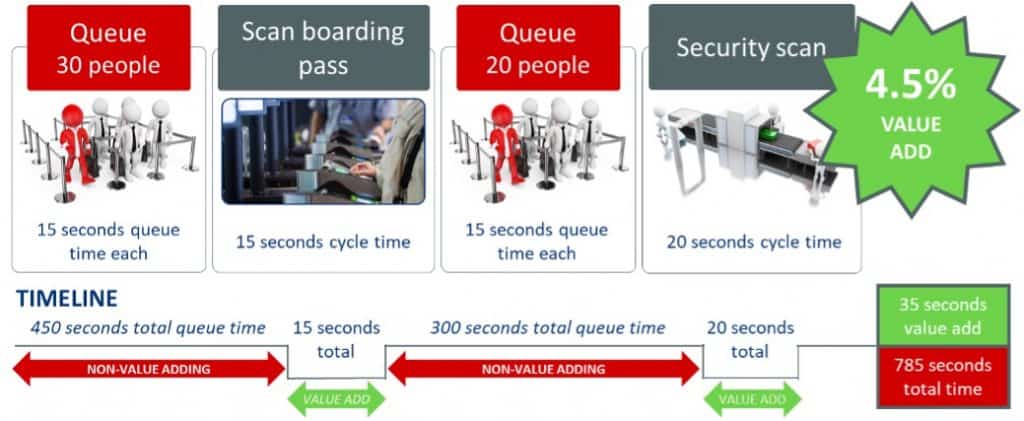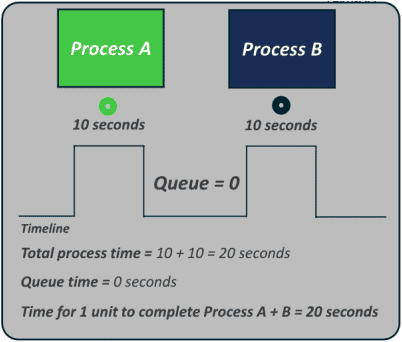What is a Value Stream?
“A Value Stream is the sum of all the activities necessary to create, order and produce a product or service.”
A Value Stream begins and ends with the Customer. The starting point of the Value Stream is when the customer makes a purchase or submits a request for a service. It ends when the customer has received the product (a physical item) or service (a request for a quote, admission to a hospital for example).
Value Stream Analysis considers everything that happens between the initial request/order and the provision of the service/product. The aim of Value Stream analysis is to reduce or eliminate delays in the process and improve delivery to the customer.
For example, the graphic below displays the steps in making a Loan Application, but the only step which adds value for the customer is the final one illustrated in green, the actual loan approval. The other steps which include walking and waiting don’t add any value from the customer’s point of view.

We can define value-adding as the steps or activities that add value in the eyes of the customer. Value-adding is this case is the loan approval. It also is defined as those activities that the Customer is willing to pay for. Non-value-added activities are the elements that are not important to your customer, and they are not willing to pay for them (walking, waiting).
The value stream is shown as an end-to-end collection of all activities touching the product both value-adding and non-value-adding that result in the product or service for a customer, stakeholder, or end-user.
3 benefits of Value Stream analysis:
1. Focuses on the customer:
Since the value stream starts and ends with the customer, you focus on what’s important to them.
2. Identifies value-adding activities and highlights where waste occurs:
If much of your efforts are non-value-adding, you are wasting business resources. The value stream helps you identify and focus on the work elements that are important to your customer.
3. Provides a roadmap for improvement:
Once you’ve established where the waste is in the process, you can establish projects to reduce or completely remove waste.
The Value Stream Map is mapped from the customer’s perspective. This means that you consider all the time and touchpoints used to complete the total Value Stream.
Doing this allows you to calculate and compare the total Value Add to the Non-Value Add time within a process. To give an example we will use a process that many people are very familiar with, the security clearance process in an airport.

This analysis shows that the total value-adding time is only 4.5% of the total process time! This is calculated by dividing the value add time (the time adding value to the customer in the process) by the total time it takes to complete the process.
35 seconds ÷ 785 seconds = 0.039 x 100 = 4.5% Value Add



